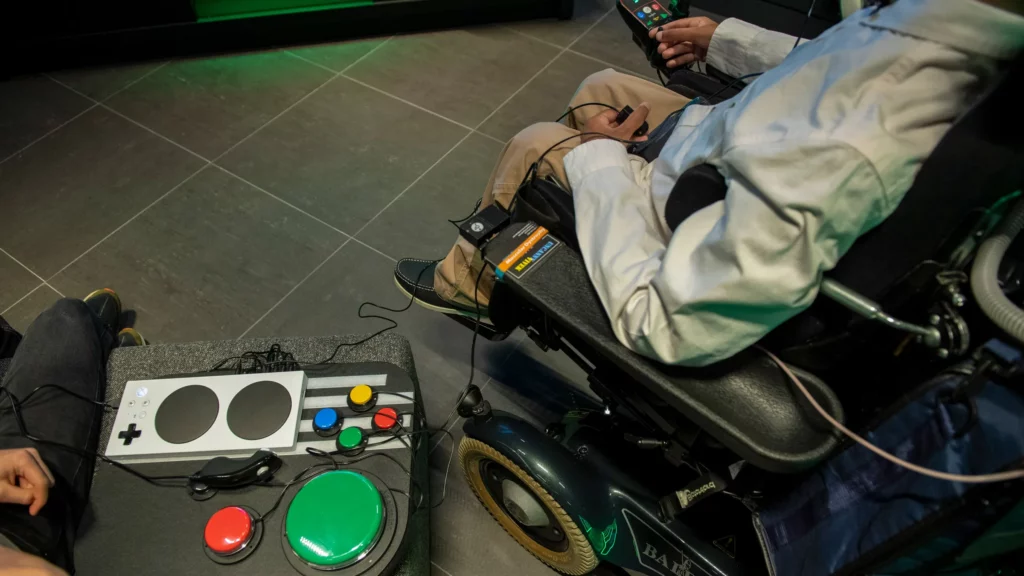The gaming industry has made significant progress in recent years in terms of inclusivity and accessibility, particularly when it comes to meeting the needs of disabled gamers and enabling inclusive play. Through the use of technology and alternative input methods, the industry has been able to empower disabled gamers to fully participate in and enjoy the hobby.
In addition to making games more accessible and promoting inclusive play, developers have also been focusing on creating more inclusive storylines and characters that represent a wider range of identities and underrepresented communities. These efforts have helped to break down barriers and make the gaming community more welcoming and inclusive for all.
Breaking Down Barriers: The Importance of Accessibility in Gaming
One of the major barriers that has historically limited the participation of some gamers is the lack of accessibility in games. This includes everything from the controls and user interface, to the audio and visual elements of the game.
For example, some gamers may have physical impairments that make it difficult to use traditional controllers, while others may have vision or hearing impairments that can make it challenging to fully experience certain games. These barriers can be especially limiting for disabled gamers, who may face unique challenges in accessing and playing certain games.
Fortunately, the gaming industry has recognized the importance of accessibility and has made efforts in recent years to break down these barriers and create a more inclusive environment for all through inclusive play.
By making games more accessible, developers are able to open up the hobby to a wider audience and create a more inclusive community. This can involve implementing alternative control methods and assistive technology to enable inclusive play, as well as developing storylines and characters that represent a wider range of identities and experiences.
By addressing the needs of disabled gamers and creating a more welcoming and inclusive environment, the industry is able to expand the gaming communities.
Gaming for Everyone: How the Industry is Catering to Disabled Gamers and Promoting Inclusive Play

Disabled gamers often face unique challenges when it comes to playing games. From physical impairments that make it difficult to use traditional controllers to vision and hearing impairments, these gamers may be limited in their ability to play certain games. Fortunately, the industry is starting to address these issues through the use of alternative input methods and assistive technology to enable inclusive gaming.
Here are a few examples of alternative input methods and assistive technology that have been developed to address the unique challenges faced by underrepresented gaming communities and promote inclusive play:
- Alternative controllers: These are modified versions of traditional controllers that are designed to be easier to use for gamers with physical impairments. Examples include controllers with larger buttons or joysticks, or controllers with adjustable sensitivity settings.
- Eye-tracking technology: This technology allows gamers with vision impairments or physical impairments that make it difficult to use traditional controllers to play games using eye movements.
- Text-to-speech and speech-to-text software: These tools allow gamers with hearing impairments or physical impairments that make it difficult to use traditional controllers to play games using voice commands.
- Audio description: This technology provides audio descriptions of visual elements in games for gamers with vision impairments, allowing them to fully experience the game.
- Subtitles and closed captions: These tools allow gamers with hearing impairments to understand spoken dialogue and sound effects in games.
- Colorblind modes: These modes allow gamers with colorblindness to adjust the color palette of games to make them more visible.
These are just a few examples of the various alternative input methods and assistive technologies that are being developed to enable inclusive play and meet the needs.
Diversity and Inclusion in Gaming: Why It Matters and How the Industry Can Strengthen It

The Importance of Representation:
- 74% of gamers don’t play games they feel are not made for them. This represents a massive missed opportunity for publishers and developers to meet the needs of a diverse audience and enable inclusive play. In fact, research has shown that video games with more diverse characters appeal to a broader group of gamers and tend to increase a gaming genre’s or franchise’s popularity across a wider audience. By creating inclusive and representative content, the industry can better reflect the diverse backgrounds and experiences of its players and create a more welcoming and inclusive environment for all.
The Role of Accessibility and Affordability:
- In addition to representation, accessibility, and affordability are key factors in strengthening diversity and inclusion in gaming. The industry can make the hobby more accessible to a wider range of players by making games more accessible and easier to access, including through the use of alternative input methods and assistive technology that enable inclusive play. This includes addressing the needs of disabled gamers and those with limited financial resources. By addressing these issues, the industry can create a more welcoming and inclusive environment that caters to the needs of a diverse audience.
The Expectations of Gamers:
- According to a recent survey, over half of gamers feel that brands should take an active stance on societal issues, regardless of their own race, gender identity, or whether they have a disability. This shows that gamers want companies to be proactive in promoting diversity and inclusion, and are willing to support brands that align with their values. For companies, taking an active stance on issues of diversity and inclusion may lead to increased engagement and revenue among a diverse gaming audience.
Insights from Intel

As the gaming industry continues to grow and evolve, it’s important for companies to understand the needs and preferences of a diverse and rapidly expanding gaming community.
By 2022, it’s estimated that there will be around 2.7 billion gamers worldwide, representing a wide range of backgrounds, identities, and experiences. Intel is committed to serving this vast and diverse gaming community and believes that sharing critical insights can help inform industry-wide efforts to create better products and enable inclusive play for gamers in underrepresented communities. By considering the unique needs and interests of a diverse audience, the gaming industry can create a more inclusive and welcoming environment for all.

One response to “Disabled Gamers: Gaming Industry’s Efforts to Make Games Accessible for All”
[…] options. The Xbox Adaptive Controller, for example, is a device specifically designed to be used by disabled gamers, allowing them to customize and adapt their control setup to meet their unique needs.In-game […]